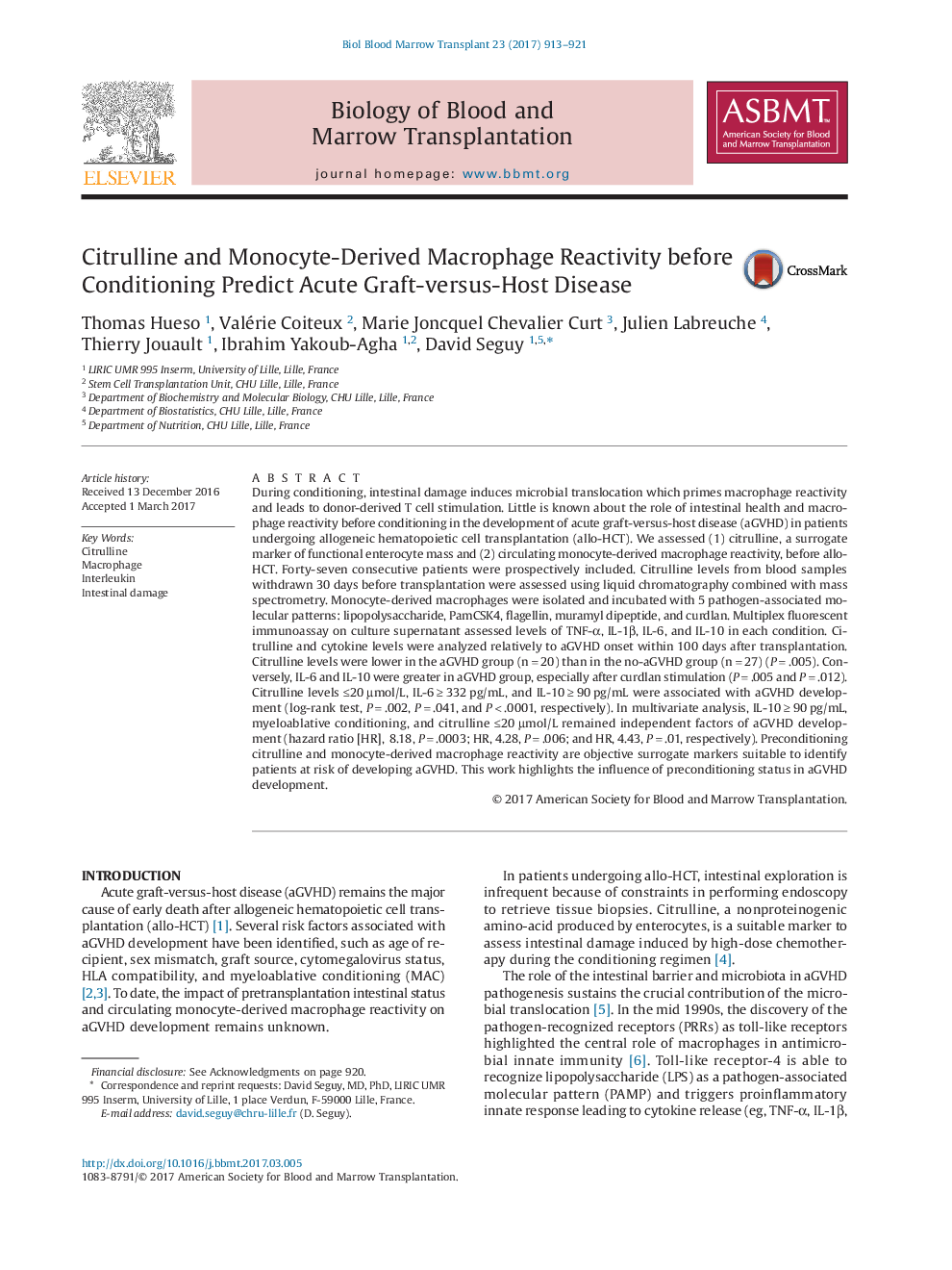| Article ID | Journal | Published Year | Pages | File Type |
|---|---|---|---|---|
| 5524178 | Biology of Blood and Marrow Transplantation | 2017 | 9 Pages |
â¢We provide insights on intestinal damage and macrophage reactivity before conditioningâ¢Pretransplantation citrulline and IL-10 can identify patients likely to develop acute graft-versus-host diseaseâ¢Restoring intestinal trophicity before conditioning would limit acute graft-versus-host disease development
During conditioning, intestinal damage induces microbial translocation which primes macrophage reactivity and leads to donor-derived T cell stimulation. Little is known about the role of intestinal health and macrophage reactivity before conditioning in the development of acute graft-versus-host disease (aGVHD) in patients undergoing allogeneic hematopoietic cell transplantation (allo-HCT). We assessed (1) citrulline, a surrogate marker of functional enterocyte mass and (2) circulating monocyte-derived macrophage reactivity, before allo-HCT. Forty-seven consecutive patients were prospectively included. Citrulline levels from blood samples withdrawn 30 days before transplantation were assessed using liquid chromatography combined with mass spectrometry. Monocyte-derived macrophages were isolated and incubated with 5 pathogen-associated molecular patterns: lipopolysaccharide, PamCSK4, flagellin, muramyl dipeptide, and curdlan. Multiplex fluorescent immunoassay on culture supernatant assessed levels of TNF-α, IL-1β, IL-6, and IL-10 in each condition. Citrulline and cytokine levels were analyzed relatively to aGVHD onset within 100 days after transplantation. Citrulline levels were lower in the aGVHD group (nâ=â20) than in the no-aGVHD group (nâ=â27) (Pâ=â.005). Conversely, IL-6 and IL-10 were greater in aGVHD group, especially after curdlan stimulation (Pâ=â.005 and Pâ=â.012). Citrulline levels â¤20âµmol/L, IL-6ââ¥â332âpg/mL, and IL-10ââ¥â90âpg/mL were associated with aGVHD development (log-rank test, Pâ=â.002, Pâ=â.041, and Pâ<â.0001, respectively). In multivariate analysis, IL-10ââ¥â90âpg/mL, myeloablative conditioning, and citrulline â¤20âµmol/L remained independent factors of aGVHD development (hazard ratio [HR], â8.18, Pâ=â.0003; HR,â4.28, Pâ=â.006; and HR, 4.43, Pâ=â.01, respectively). Preconditioning citrulline and monocyte-derived macrophage reactivity are objective surrogate markers suitable to identify patients at risk of developing aGVHD. This work highlights the influence of preconditioning status in aGVHD development.
